The Ball Theater is an installation designed to reawaken our desires for utopia. Its hemispherical shape elicits multiple images. It can be interpreted equally as a terrestrial globe or as a mirror ball, a kitsch icon of an era when partying was still possible. This party aura suggests a new approach to today’s crises, one in which the emphasis is no longer on emergency, but on the possibility of alternative futures. This is enacted in the theater for the duration of the biennale by an alternation between moments of contemplation and immersion in a landscape of sound echoing with foreign and far-off voices, and periods of intense occupancy in the form of variations on the theme of the “ball”, an interplay of workshop-residences between artists, researchers and students.
Muoto & Georgi Stanishev Ball Theater
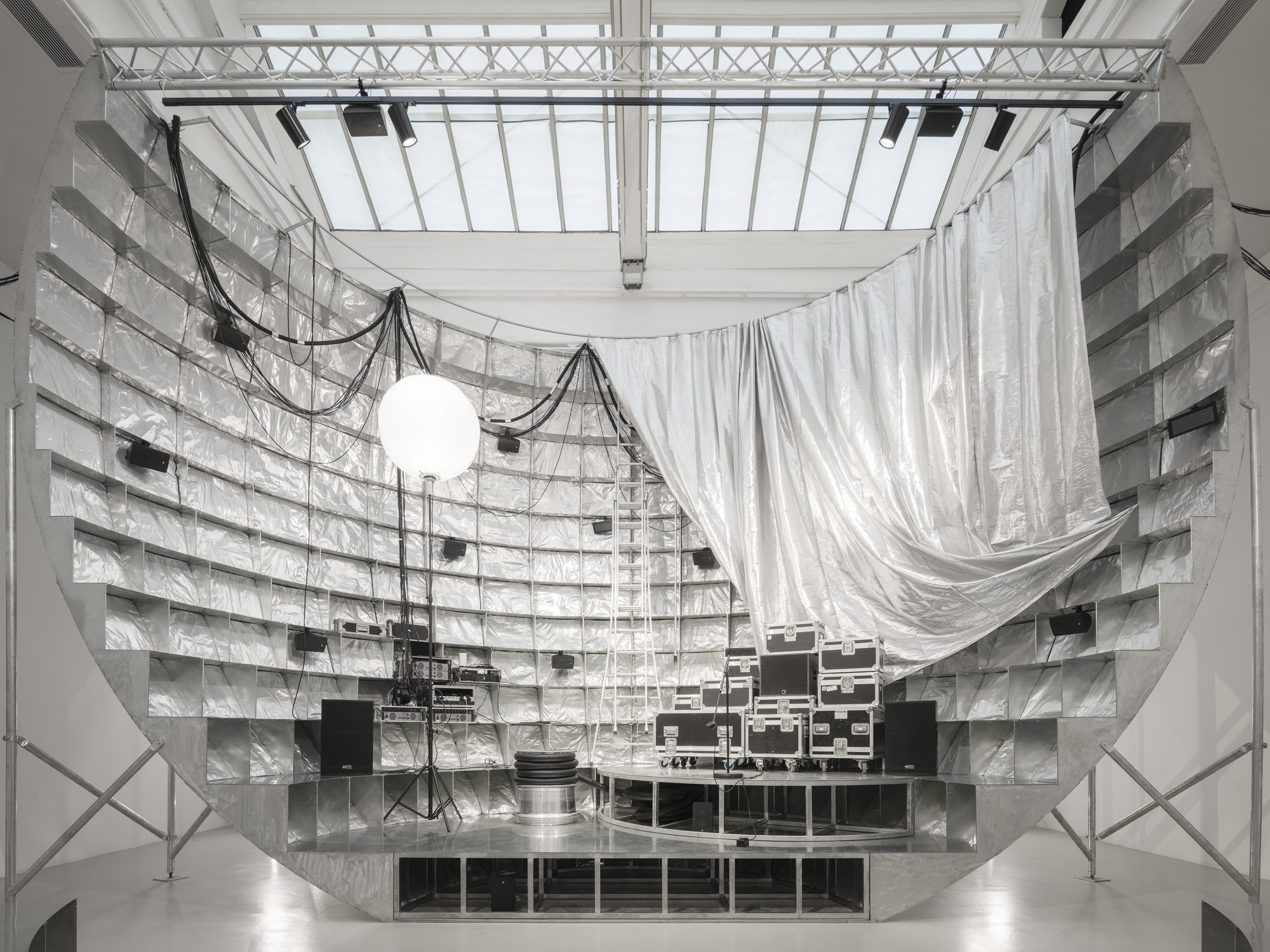
© Schnepp Renou
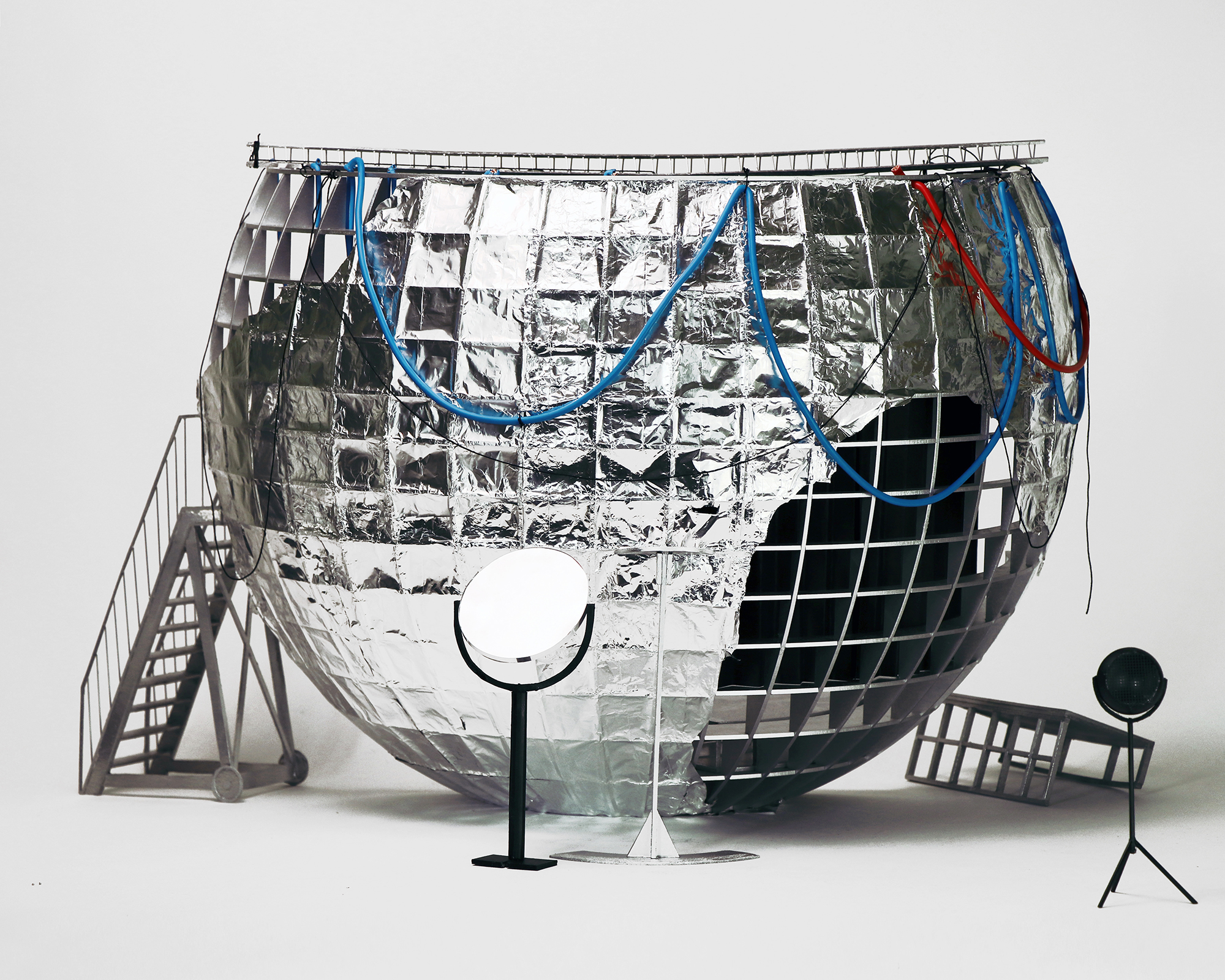
© Muoto + Stanishev et La Sagna
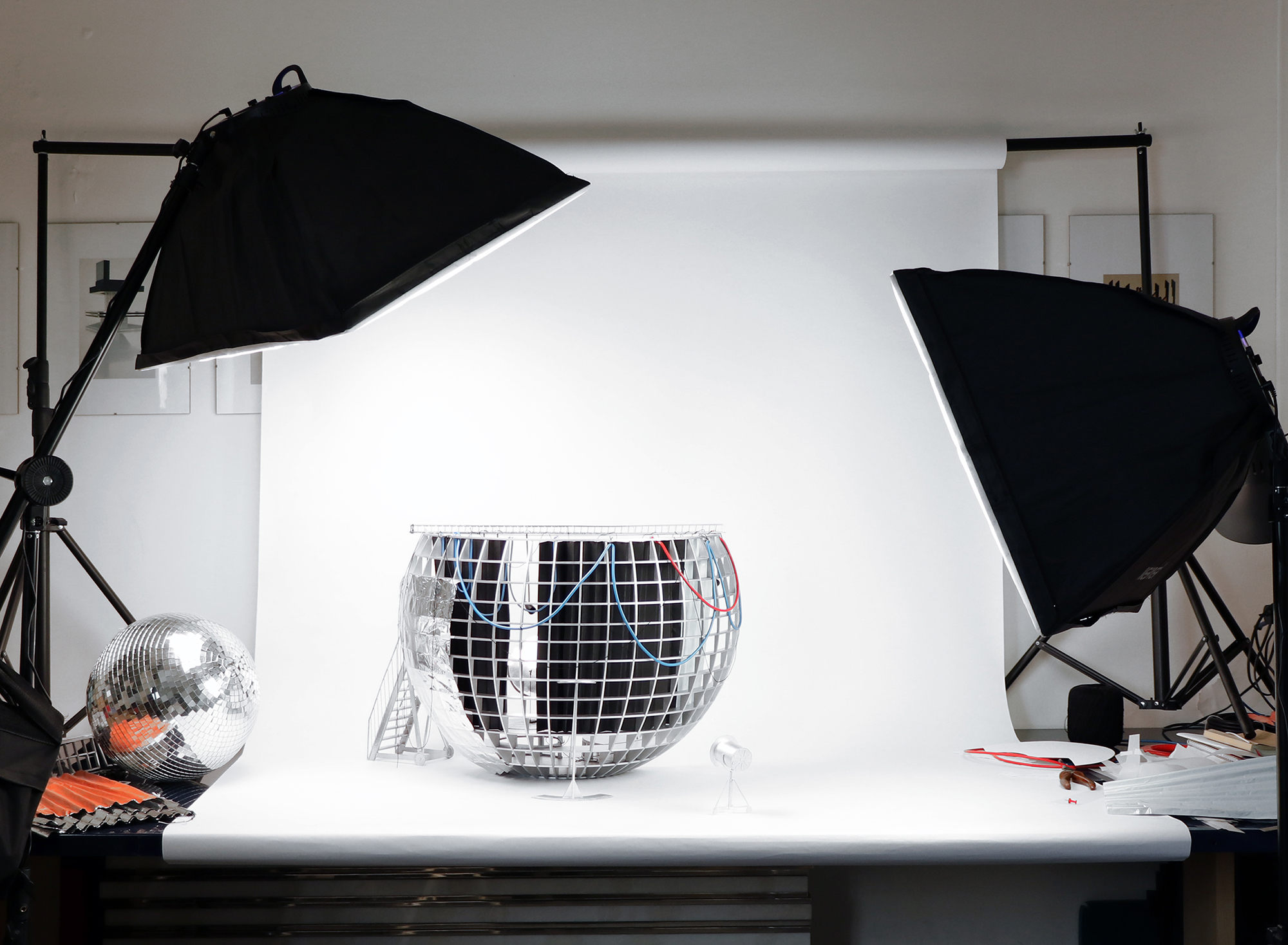
© Muoto + Stanishev et La Sagna

© Muoto (Gilles Delalex, Yves Moreau) & Georgi Stanishev
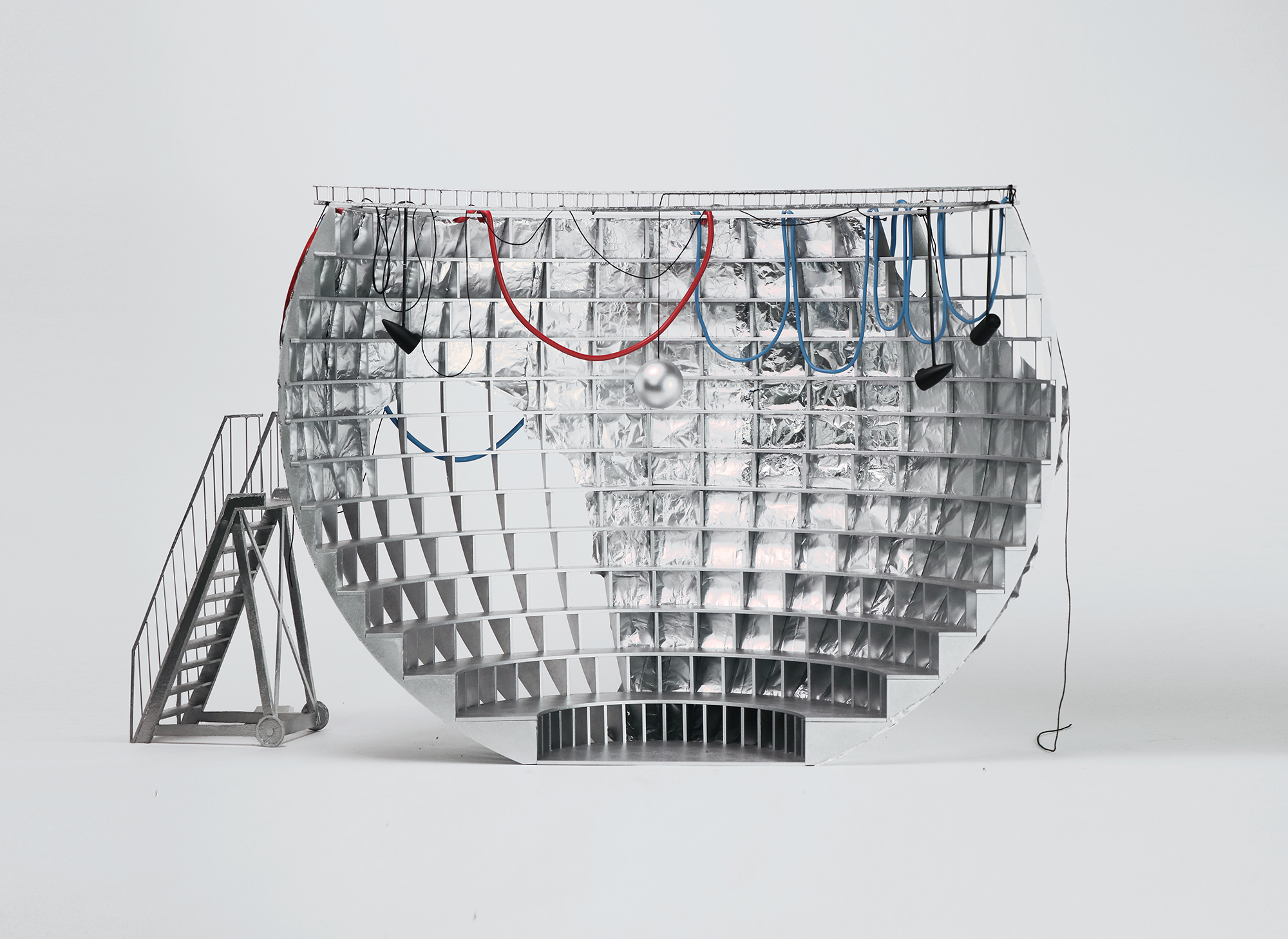
© Muoto + Stanishev et La Sagna
The architecture of the theater stands midway between structure and setting. The purpose of this scenographic dimension is – like in a real theater – to accommodate a stage, performers and an audience. What it projects is nevertheless ambivalent, juxtaposing images as contradictory as the futuristic capsule and the primitive hut. In this way, it reflects our contrasting feelings of hope and nostalgia. Our desire to rebuild a future that belongs to the past by recycling a host of found objects.
As a result, the theater raises more questions than it answers. What is the origin of this half-sphere? Who lives in it? What is it for? How did it get there? What are the shards of voices, whispers and bursts of static emanating from its loudspeakers telling us? Has it just landed or is it about to take off? These are the questions that we ask ourselves in an uncertain world: should we land or take off? Should we get close to things, create new communities, erase distances and distinctions, or conversely withdraw and remain aloof? How to choose? How to reinvent our relationship to this world in its quest of a future?

Extract from the book Lorem ipsum, ©Ugo Bienvenu, Remembers Studio
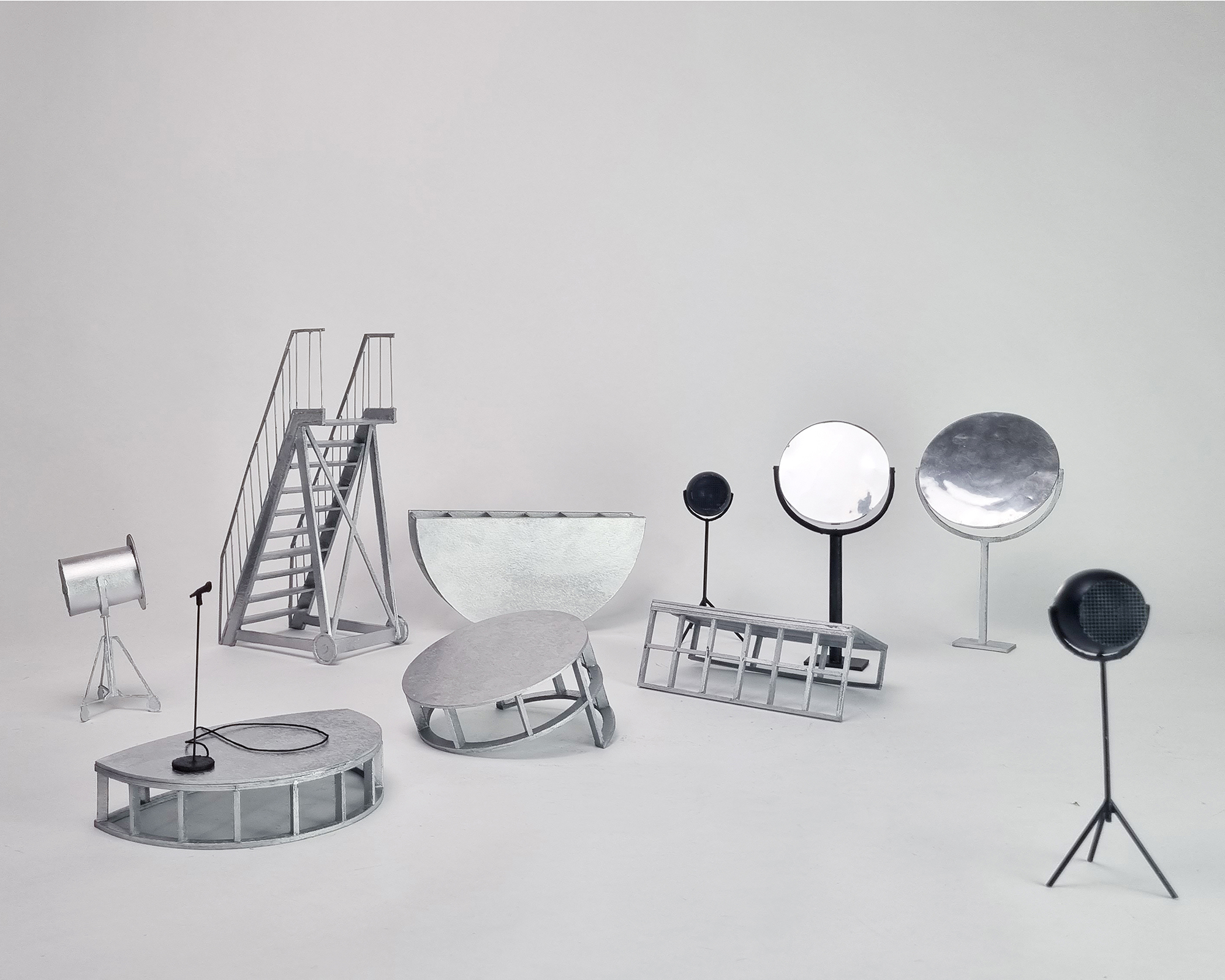
© Muoto + Stanishev et La Sagna

Bernahrd Leitner, Zilinder-raum, 1974, ©Atelier Leitner
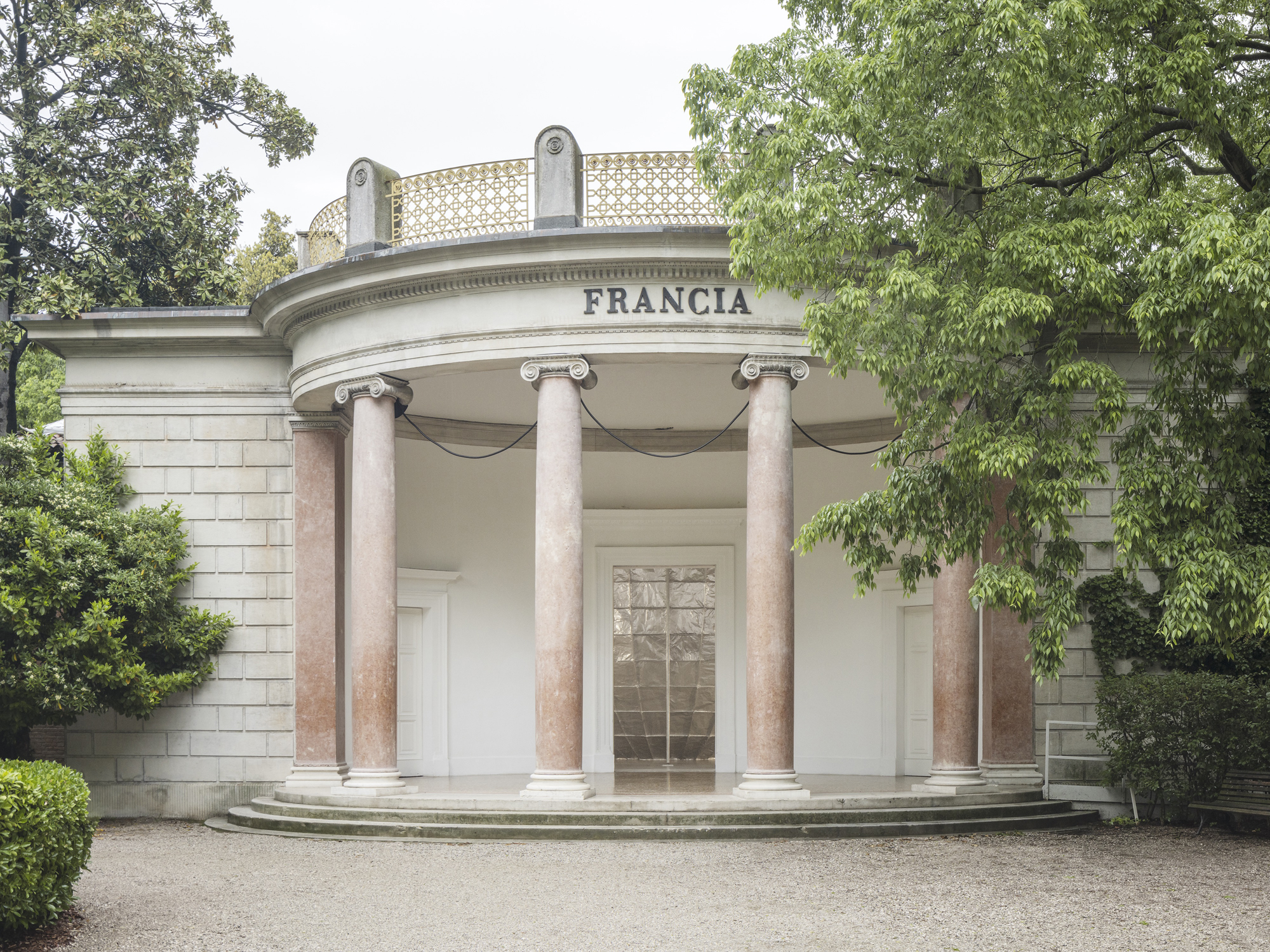
© Schnepp Renou
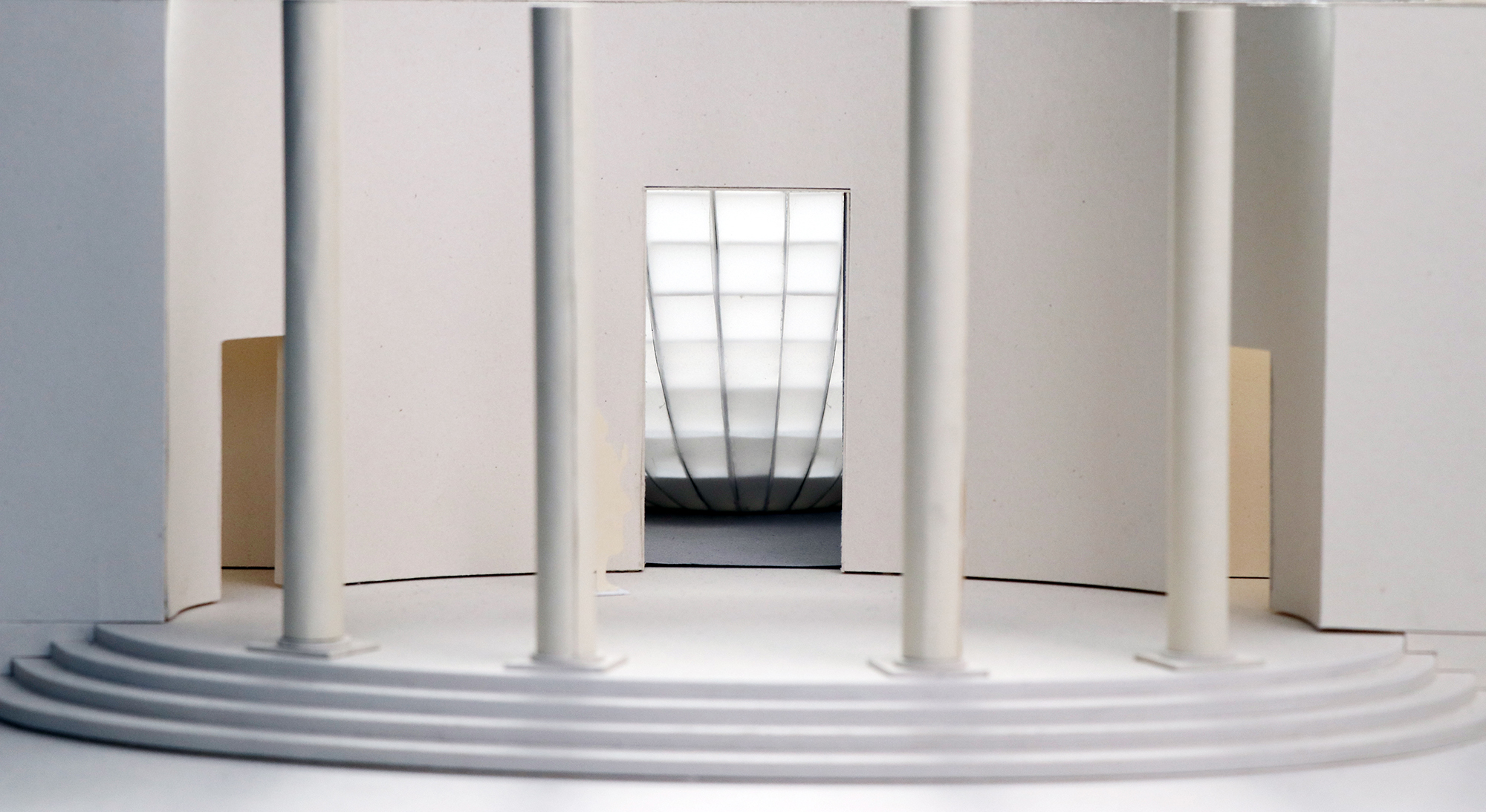
© Muoto + Georgi Stanishev et Clémence La Sagna
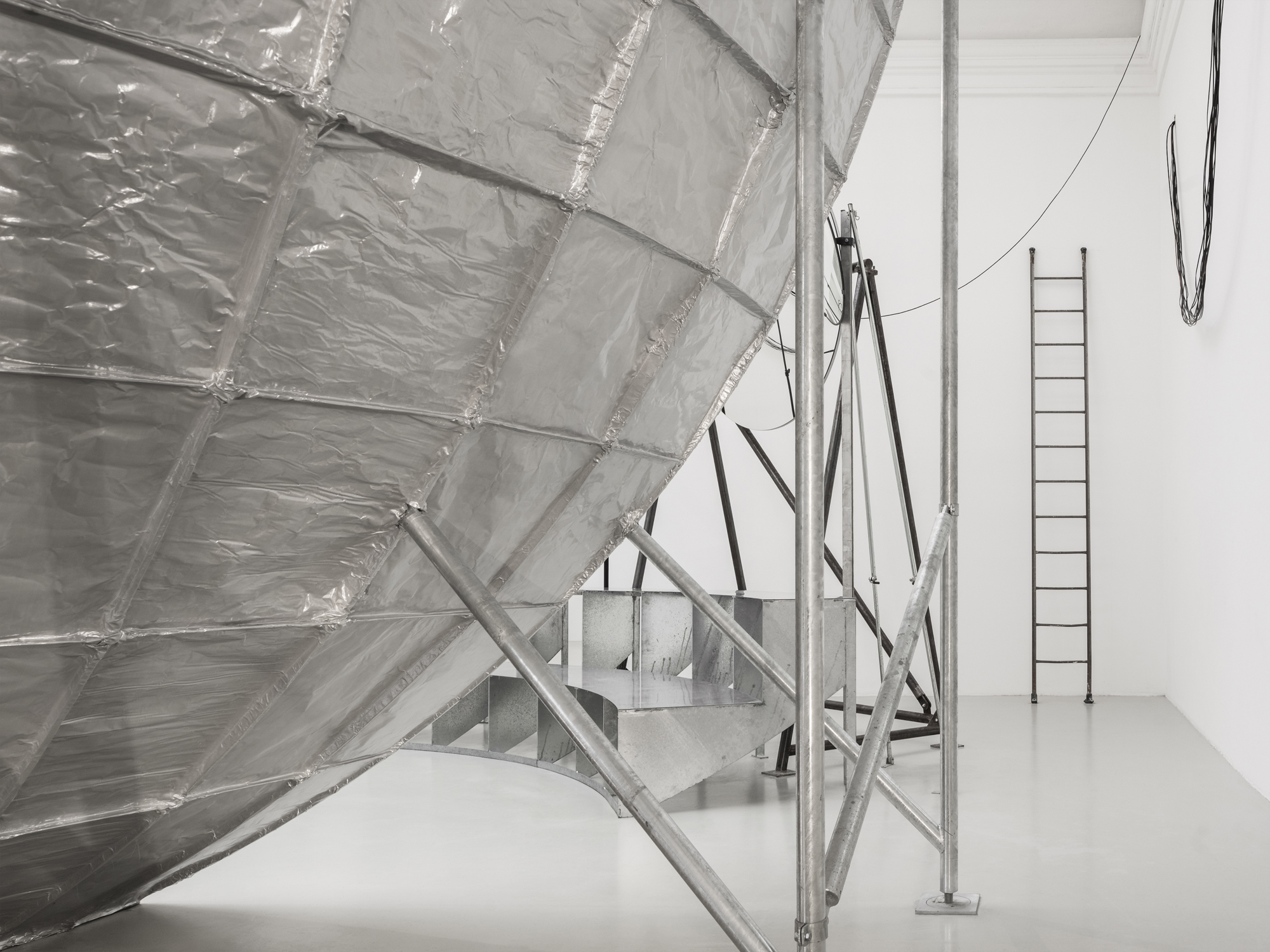
© Schnepp Renou
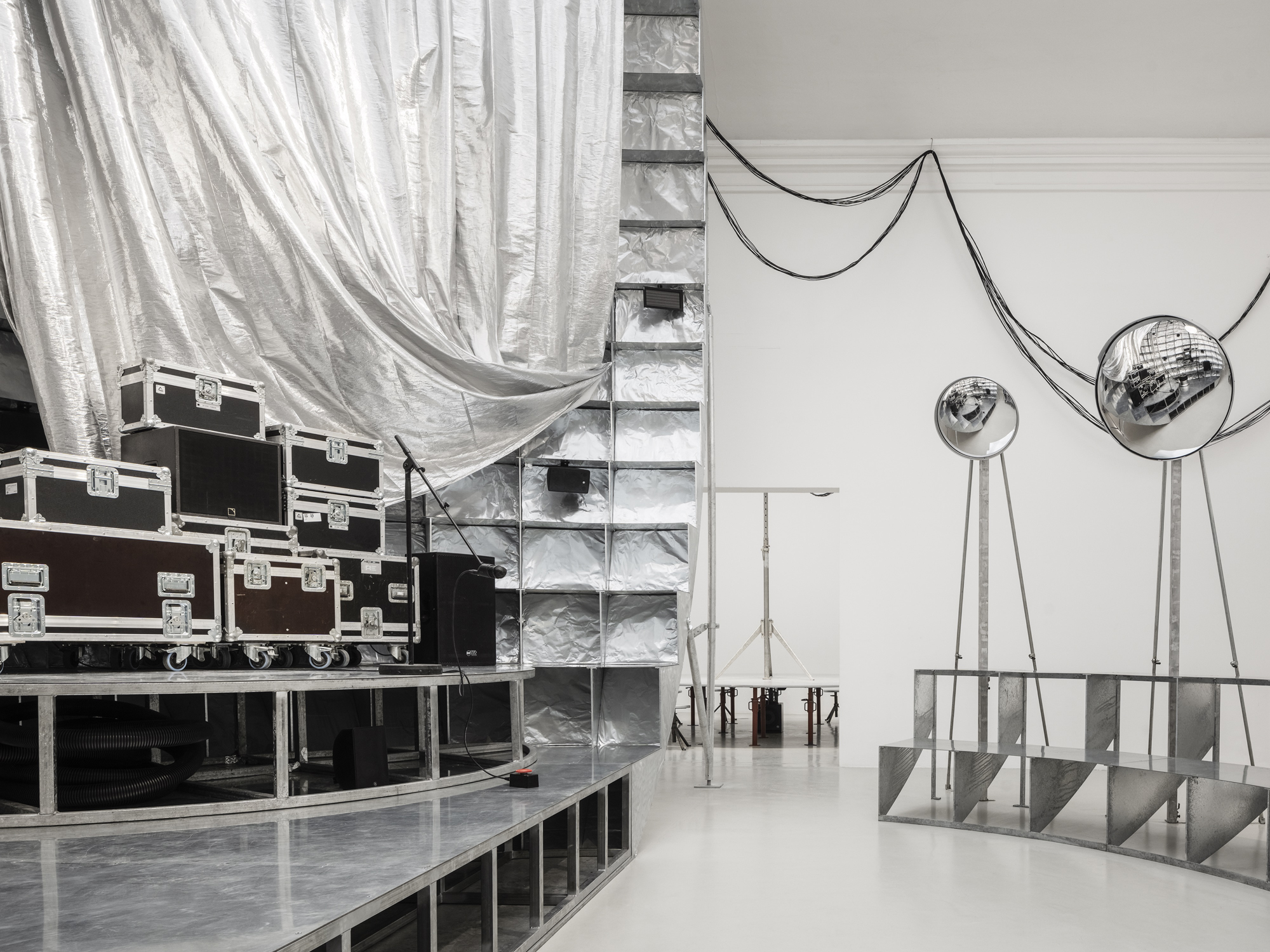
© Schnepp Renou
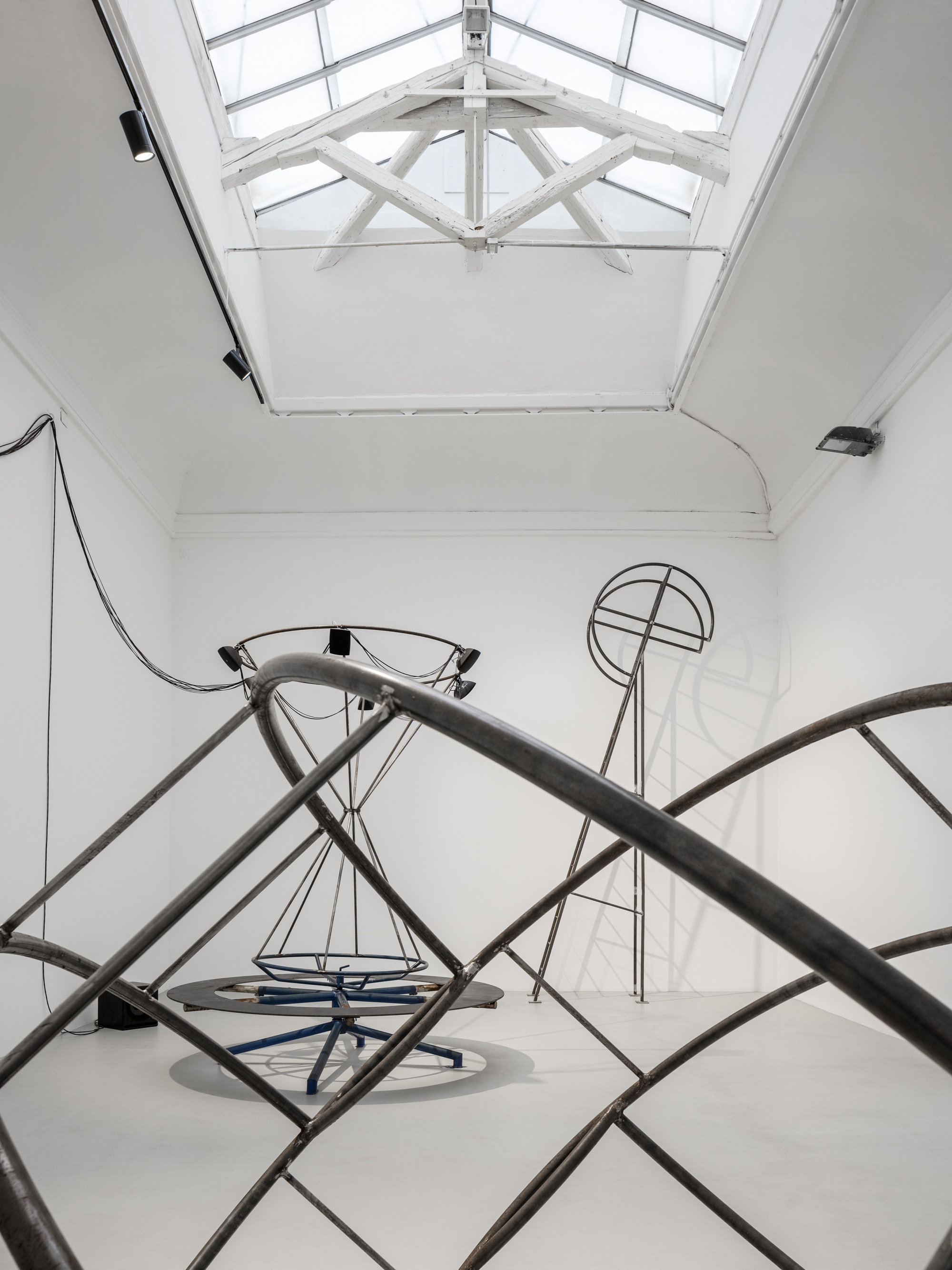
© Schnepp Renou
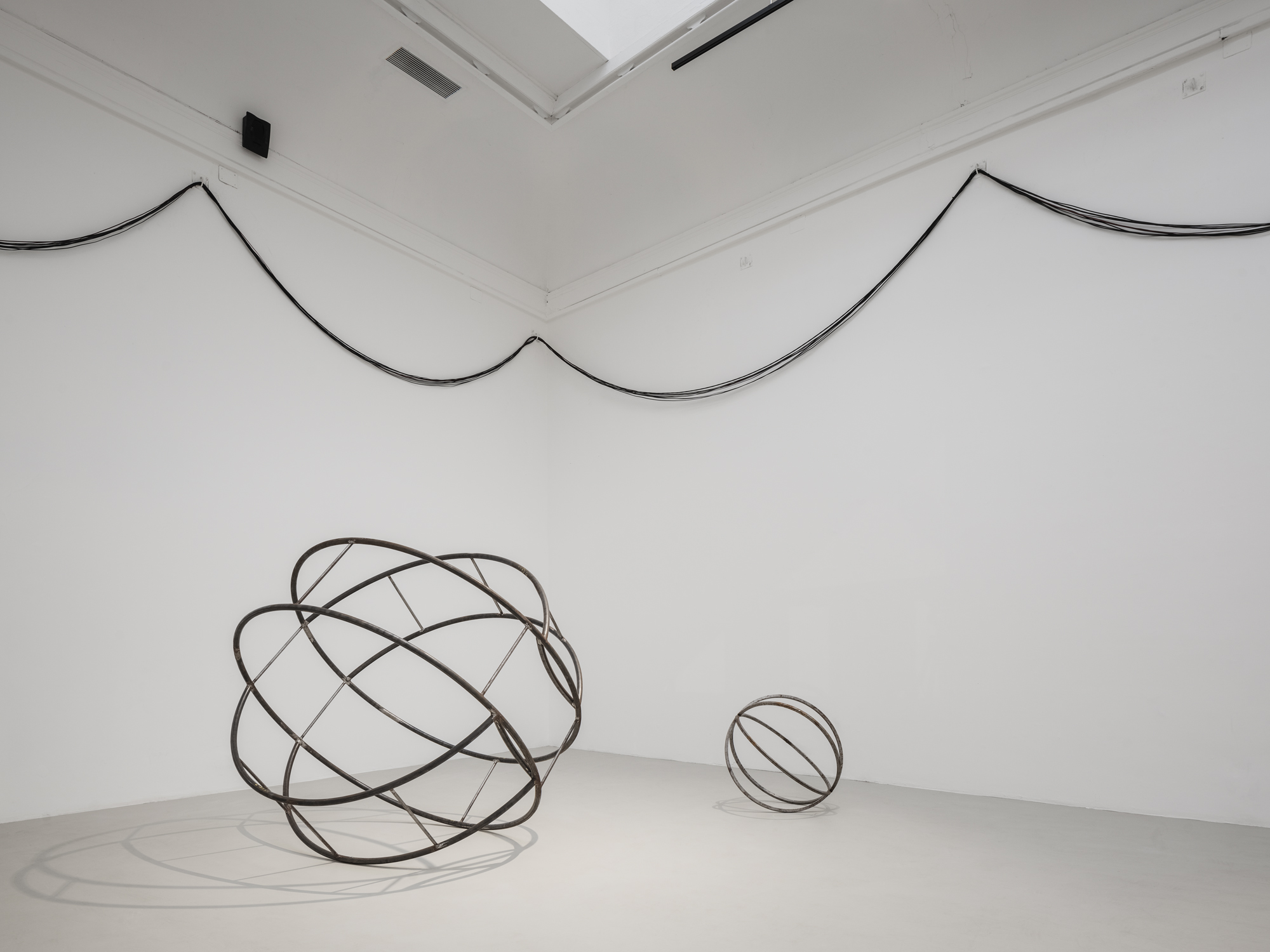
© Schnepp Renou
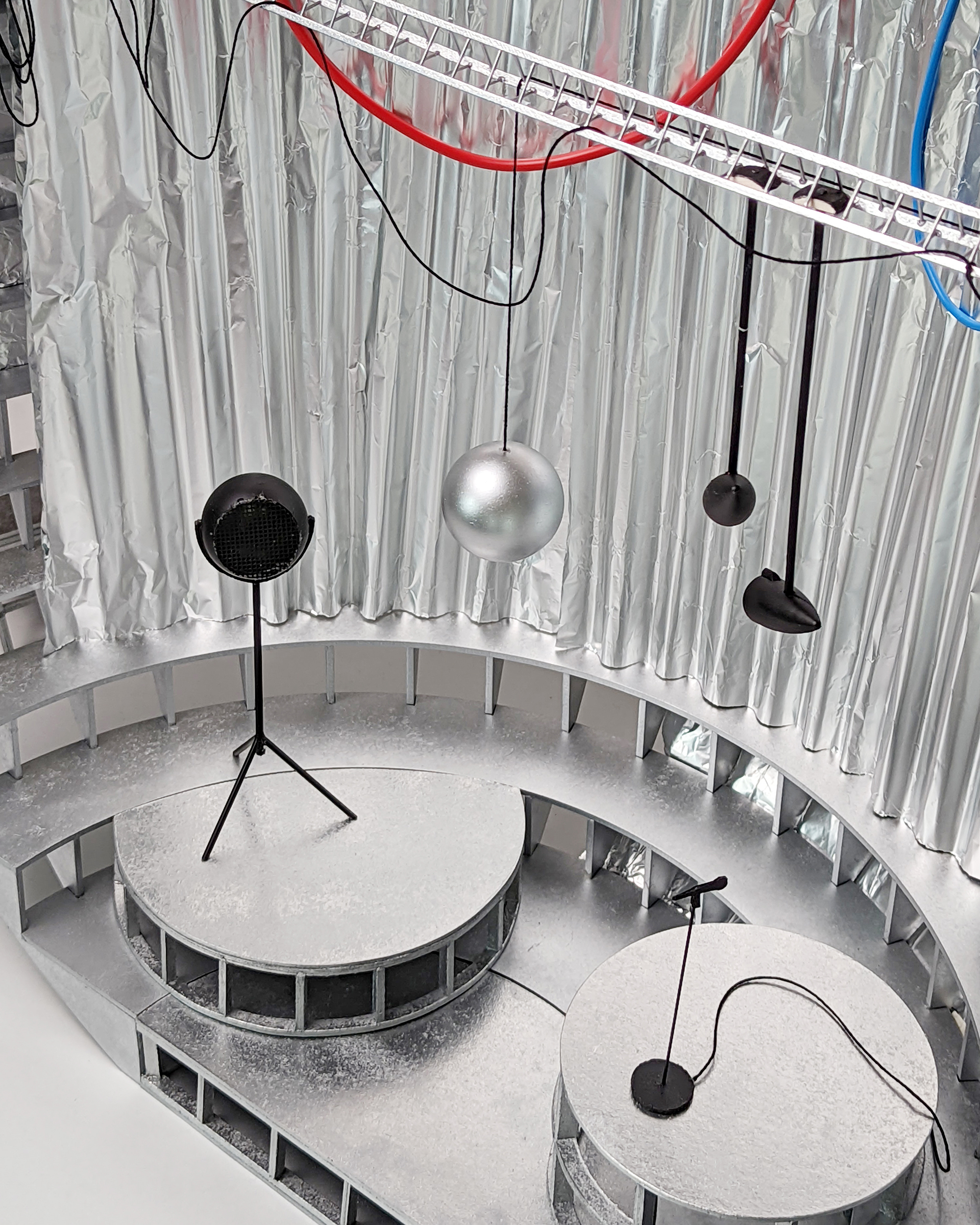
© Muoto + Georgi Stanishev et Clémence La Sagna
An invisible space of sound trajectories links the demi-sphere and all the objects around it. This acoustic space evolves over time. The voices, the whispers, the bursts of static that constitute it form an abstract, non-verbal ur-language, a stream of sound that predates words and elicits new forms of attention.
The installation is complemented by a photo novel that emphasises the installation’s fictional side by retracing the odyssey of the demi-sphere in the landscape of an abandoned city now inhabited only by children and robots. It reveals how it was built, the origin of the objects that surround it, and its destination.

Twin Islands, Violaine Lochu, 2022

Voguing ball © Benycanal

Ball Theater, © Ugo Bienvenu, Remembers Studio
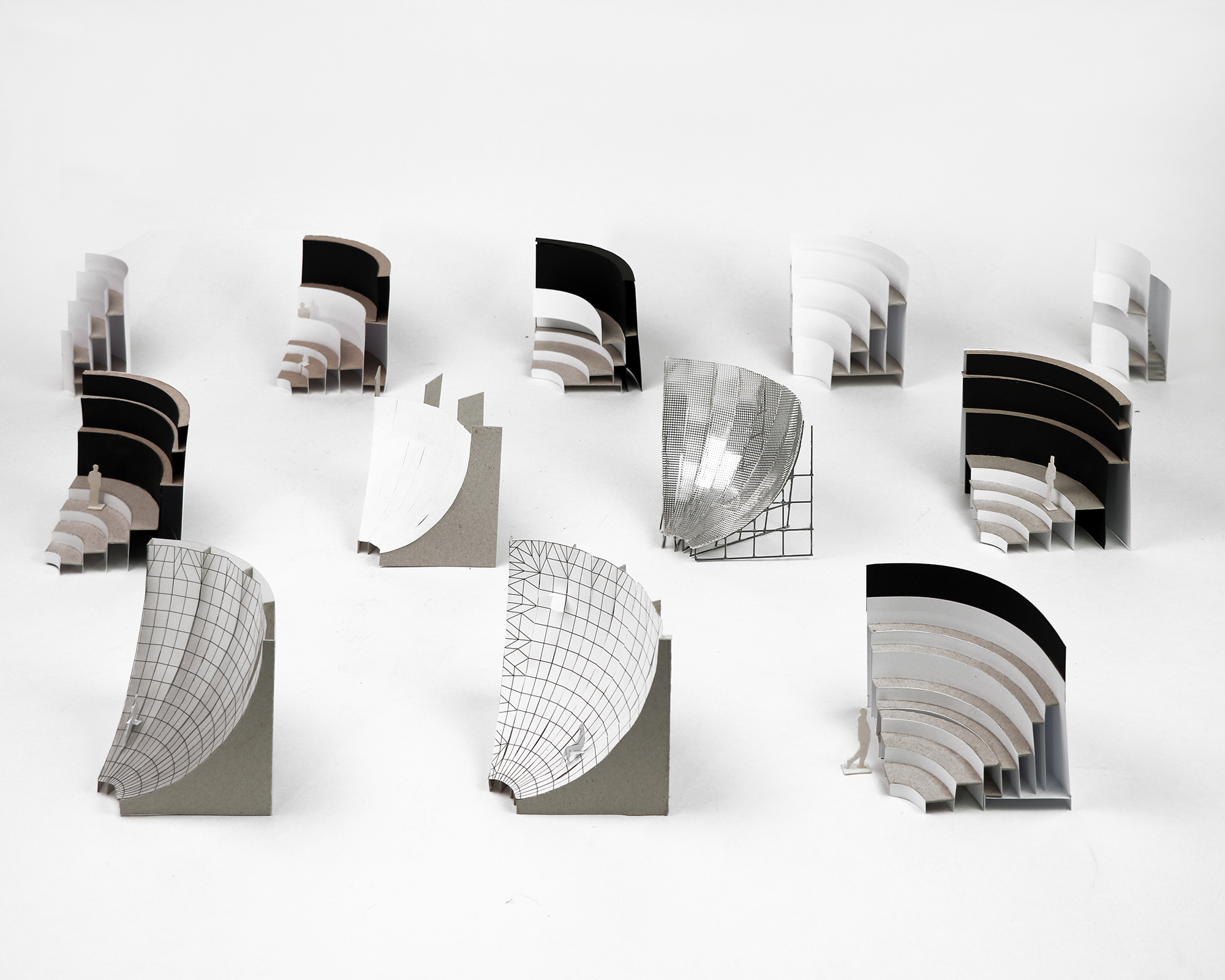
© Muoto + Georgi Stanishev et Clémence La Sagna
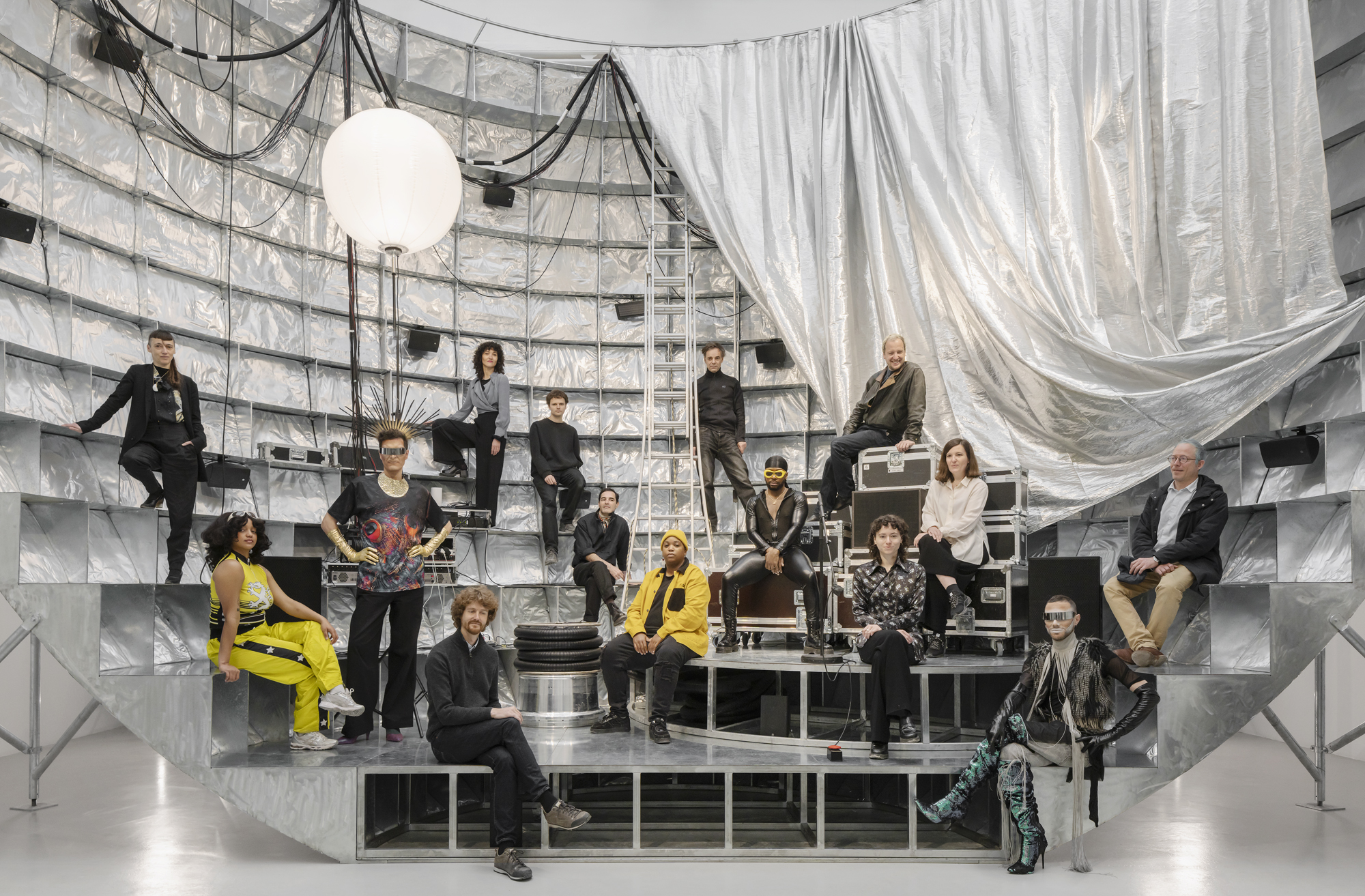
© Schnepp Renou
Other projects by muoto




